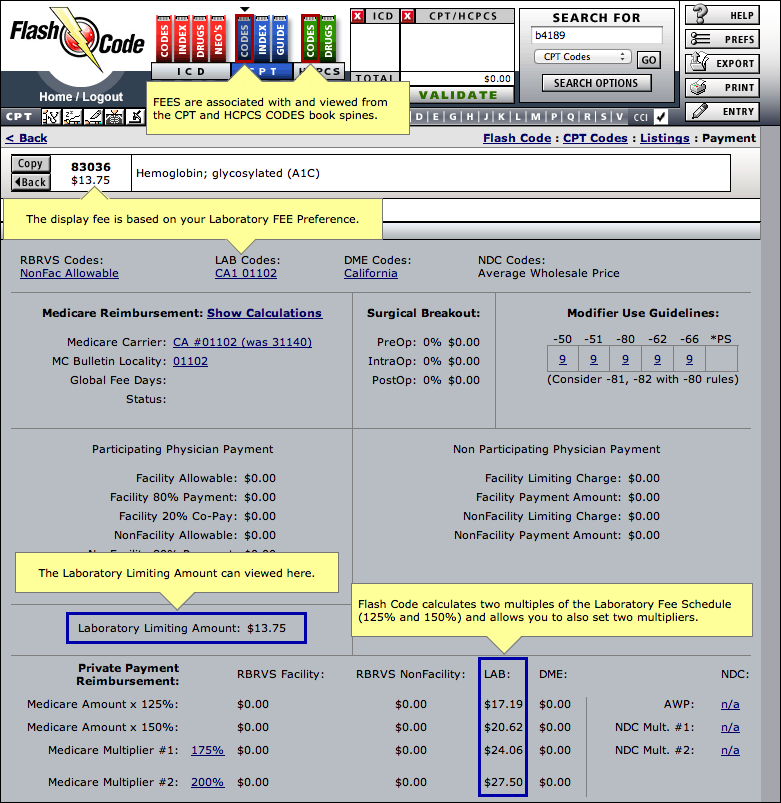

How to Use the HVAC Manual J Load Calculation
Introduction to HVAC Manual J Load Calculation
Welcome to our blog post on HVAC Manual J Load Calculation! If you’re in the world of heating, ventilation, and air conditioning (HVAC), then you know just how important it is to accurately determine the load requirements for a building. And that’s where Manual J comes into play. In this article, we’ll guide you through the ins and outs of using the HVAC Manual J Load Calculation method.
Whether you’re a seasoned professional or just starting out in the industry, understanding load calculation is essential for designing efficient and effective HVAC systems. By properly calculating heat gain and heat loss factors, as well as considering zoning and system sizing, you can ensure optimal comfort levels while maximizing energy efficiency.
But fear not! We won’t leave you stranded with complicated equations and jargon-filled explanations. Our aim is to break down each step of the process into easily digestible chunks so that even beginners can grasp the concept without breaking a sweat.
So grab your pen and paper (or better yet, your favorite load calculation software) because we’re about to dive deep into everything related to HVAC Manual J Load Calculation. Let’s get started!
Understanding the Purpose of Load Calculation
Understanding the Purpose of Load Calculation
Load calculation is an essential step in HVAC system design, and the Manual J load calculation method is widely used in the industry. But what exactly is its purpose? And why is it so important?
The main goal of load calculation is to determine the heating and cooling requirements of a building accurately. By considering factors like heat gain and heat loss, it helps HVAC professionals size equipment correctly and ensure optimal comfort for occupants.
Accurate load calculations are crucial for several reasons. They help prevent undersized or oversized systems that can lead to energy inefficiency, discomfort, and increased operating costs. Proper load calculations enable zoning options by identifying areas with different temperature needs within a building.
Moreover, load calculations aid in selecting appropriate equipment based on capacity requirements. This ensures that the HVAC system operates at maximum efficiency without unnecessary strain or excessive cycling.
By using specialized software designed for Manual J load calculations, HVAC professionals can streamline this process even further. These tools take into account various parameters such as insulation levels, window types, occupancy rates, solar exposure, and more.
Interpreting and analyzing the results obtained from these calculations requires expertise. Professionals must carefully evaluate data to identify any inconsistencies or errors that could affect system performance.
To validate their findings accurately before implementing them in real-world scenarios also plays a significant role in ensuring accuracy during installation or retrofit projects.
Given its importance in achieving energy-efficient designs while maintaining occupant comfort levels adequately balanced throughout seasons makes professional training necessary when performing Manual J load calculations effectively.
HVAC professionals should consider obtaining certification related to manual joad sizing techniques through reputable organizations like ACCA (Air Conditioning Contractors of America). Certification demonstrates competence in conducting accurate residential heating and cooling assessments according to industry standards.
Despite its significance within HVAC design processes today’s highly technological advances have made incorporating manual joad sizing techniques into existing practices easier than ever before updates regularly occur making sure we stay up-to-date with the latest advancements.
Understanding the purpose of load calculation is vital for
Gather Required Data and Information
To ensure an accurate and reliable HVAC Manual J Load Calculation, gathering the required data and information is crucial. This step lays the foundation for the entire calculation process.
Start by collecting details about the building, such as its size, orientation, and construction materials. Additionally, note down any insulation present in walls, floors, and ceilings. These factors greatly impact heat gain and loss.
Next, gather information about windows including their size, type (single pane or double pane), tinting or coating if applicable. Windows play a significant role in determining heat transfer.
Don’t forget to consider internal heat sources like appliances, lighting fixtures, and occupancy levels. These factors contribute to overall heat gain within the space.
Weather data is equally important. Accurate local climate information helps calculate outdoor design conditions which affect load calculations for heating and cooling systems.
Lastly,enquire about any special requirements that may impact load calculations,such as high ceilings or unusual room shapes.
By diligently gathering all necessary data upfront,you’ll have a solid starting point for your HVAC Manual J Load Calculation.
The more precise your inputs,the more accurate your results will be.
Ensuring you have comprehensive details at this stage will save time later on during analysis of results.
It’s worth investing effort into this crucial step!
Determine the Heat Gain and Heat Loss Factors
Determine the Heat Gain and Heat Loss Factors
When it comes to accurately sizing an HVAC system, determining the heat gain and heat loss factors is crucial. This step in the Manual J Load Calculation process helps determine how much heating or cooling capacity a building will require.
To calculate heat gain, various factors need to be considered. These include the size and orientation of windows, insulation levels, air infiltration rates, appliances in the space, occupancy levels, and even internal heat sources like lighting and equipment. By gathering this data, you can get a comprehensive understanding of how much heat will enter your building during different weather conditions.
On the other hand, calculating heat loss involves evaluating factors such as wall construction materials, roof types, insulation thicknesses throughout the building envelope, window U-values (thermal transmittance), air leakage rates through cracks or gaps in walls/doors/windows; all these contribute to determining how much heat will escape from your property.
Both processes involve detailed analysis and accurate measurements. Keep in mind that any errors or omissions at this stage could lead to an improperly sized system that may not adequately cool or warm your space.
Ultimately though,the goal is always precise calculations ensuring optimal comfort while maximizing energy efficiency
Calculate the Heating Load
Calculate the Heating Load
Determining the heating load is a crucial step in HVAC system design. It helps to accurately size the heating equipment and ensure optimal performance and energy efficiency.
To calculate the heating load, you need to consider several factors. First, gather data on the building’s insulation levels, windows, doors, and other relevant construction details. This information will help determine heat transfer rates.
Next, analyze heat gain factors such as solar radiation through windows and walls, internal heat sources like appliances or lighting fixtures, and infiltration of outdoor air into the building. These factors contribute to the total heat that needs to be supplied by the heating system.
Once you have gathered all necessary data regarding insulation and heat gain factors, use specialized software or manual calculations to perform accurate computations. The result will provide an estimate of how much heating capacity is required for your specific space.
It’s important to note that oversizing or undersizing a heating system can lead to inefficiencies and increased operating costs. That’s why using reliable methods like Manual J Load Calculation is essential for achieving optimal comfort while minimizing energy consumption.
By accurately calculating the heating load based on specific requirements and conditions of your building, you can select appropriate equipment sizes that meet those demands efficiently. This ensures comfortable indoor temperatures throughout winter months without unnecessary energy waste.
Incorporating load calculation into HVAC design allows for thoughtful consideration of various variables such as insulation quality or solar exposure when determining proper sizing choices for each zone within a structure. By customizing these calculations according to regional climate patterns or individual room usage patterns (e.g., high-traffic areas versus seldom-used spaces), designers can make informed decisions about how best their clients’ spaces should function with respect to temperature control during colder seasons
Calculate the Cooling Load
The cooling load calculation is a crucial step in the HVAC Manual J Load Calculation process. It allows you to determine the amount of cooling capacity needed to maintain a comfortable indoor environment. By accurately calculating the cooling load, you can ensure that your HVAC system is properly sized and optimized for energy efficiency.
To calculate the cooling load, several factors must be taken into consideration. These include the building’s orientation, insulation levels, window characteristics, and internal heat gains from appliances and occupants. Additionally, outdoor weather data such as temperature and humidity levels are also considered.
One important aspect of calculating the cooling load is understanding how different areas within a building may have varying requirements. Zoning plays a significant role in this process as it allows for precise control over temperature distribution throughout different spaces.
Utilizing specialized software designed for Manual J Load Calculation simplifies the process by automating complex calculations based on inputted data. The results obtained from these programs provide valuable information regarding equipment selection and system performance.
Interpreting and analyzing the results of the cooling load calculation requires expertise in understanding HVAC principles and design parameters. A thorough evaluation ensures that any potential errors or inconsistencies are identified early on.
Accurate calculations are essential because undersized or oversized systems can lead to discomfort, energy inefficiency, increased costs, or premature equipment failure. Furthermore, accurate calculations contribute to complying with local building codes and regulations while promoting sustainable practices.
Professional training is highly recommended for those involved in performing Manual J Load Calculations as it enhances skills required for accurate assessments which directly impact system performance.
Challenges may arise during manual calculations due to complex equations involved or insufficient information about specific building components; however employing modern software tools mitigates these challenges effectively by streamlining processes through automation while ensuring accuracy at all stages of calculation
Incorporating Manual J Load Calculation into HVAC design not only improves overall system performance but also helps meet client expectations by providing optimal comfort levels while minimizing operational costs
Regular updates and changes in the Manual J Load Calculation guidelines reflect advancements in technology, energy
Consider Factors for Zoning and System Sizing
Consider Factors for Zoning and System Sizing
When it comes to HVAC system design, one crucial aspect that should not be overlooked is zoning and system sizing. Properly considering these factors can greatly enhance the efficiency and performance of your HVAC system.
Zoning involves dividing your home or building into different areas or zones, each with its own temperature control. This allows for personalized comfort and energy savings by only heating or cooling occupied spaces. When determining the number of zones needed, factors such as room usage patterns, sun exposure, and insulation levels must be taken into account.
System sizing is equally important as it ensures that your HVAC equipment is appropriately sized to meet the heating and cooling demands of each zone. Oversized systems can result in frequent cycling on and off, leading to energy wastage and reduced comfort. Undersized systems may struggle to maintain desired temperatures in extreme weather conditions.
To determine proper zoning and system sizing requirements, detailed load calculations are essential. The Manual J Load Calculation takes into consideration various parameters like heat gain from lights and appliances, heat loss through windows and walls, outdoor climate data, insulation levels, occupancy rates, among others.
By carefully analyzing these factors during the load calculation process using specialized software tools designed for Manual J calculations


Applying Manual J Load Calculation Software
Applying Manual J Load Calculation Software
When it comes to accurately determining the heating and cooling load requirements for a building, utilizing Manual J Load Calculation software can be a game-changer. This innovative tool takes into account various factors such as insulation levels, window types, occupancy rates, and climate data to provide precise calculations.
To begin using the software, input all of the required data and information about the building. This includes details about its size, construction materials used, window sizes and orientations, ventilation systems in place, and any other relevant specifics. Once this information is entered correctly into the software program, it will generate comprehensive reports outlining heat gain and heat loss factors.
The next step involves calculating both the heating load and cooling load for the building. The software considers factors like temperature differentials between inside/outside air and desired indoor temperatures. It also accounts for solar radiation through windows during different seasons.
Zoning plays an important role in HVAC system sizing as well. The software allows you to designate zones within your building based on usage patterns or specific needs (such as separate thermostats). By factoring in zoning considerations during load calculation process with Manual J Load Calculation Software , you can ensure that each zone receives adequate heating or cooling capacity.
Once you have completed all necessary inputs into the software program , analyze the results carefully. Examine if they align with your expectations or if further adjustments are needed. Remember that accuracy is crucial when it comes to proper HVAC design.
By applying Manual J Load Calculation Software correctly , you can validate your calculations by comparing them against industry standards .
This will help confirm their accuracy before proceeding with any installation plans .
In summary , utilizing Manual J Load Calculation Software streamlines what could otherwise be a complex process of manually calculating heating and cooling loads for buildings . With accurate calculations at hand , HVAC professionals can confidently proceed with designing appropriate systems tailored to meet specific requirements ensuring optimal comfort levels inside buildings while optimizing energy efficiency.
Interpreting and Analyzing the Results
Interpreting and analyzing the results of the HVAC Manual J Load Calculation is a crucial step in ensuring proper system sizing and performance. Once you have completed the load calculation, you will be presented with a set of numbers and values that represent the heating load, cooling load, and other important factors.
To start interpreting the results, it’s essential to compare them against industry standards and guidelines. This will help determine if your calculations are within acceptable parameters or if adjustments need to be made. Keep in mind that these standards may vary depending on factors such as climate zone, building type, insulation levels, and more.
Another aspect to consider when analyzing the results is identifying any potential errors or inconsistencies in your data input. Double-checking all measurements, equipment specifications, occupancy rates, and other relevant information can help ensure accuracy.
Additionally, understanding how different variables contribute to heat gain and heat loss can provide valuable insights into energy efficiency opportunities. For example, identifying areas with high solar exposure or poor insulation can highlight areas for improvement or modification.
Furthermore, considering factors such as zoning requirements can guide decisions regarding system design and layout. By understanding which areas require specific temperature control needs or have varying usage patterns throughout the day (e.g., residential vs. commercial spaces), you can optimize comfort while minimizing energy waste.
Keep in mind that interpreting the results should not end at just numbers on a page; it should also involve practical considerations based on real-world conditions. Factors such as occupant comfort preferences, local utility costs for heating/cooling fuel sources used (e.g., electricity vs. gas), available budget for equipment installation/upgrades should all be factored into decision-making processes.
In conclusion (as per instruction), properly interpreting and analyzing the results of an HVAC Manual J Load Calculation is vital for accurate system sizing and optimal performance outcomes.
Validating the Calculations
Validating the Calculations:
Once you have completed the load calculations using the HVAC Manual J Load Calculation method, it is essential to validate the accuracy of your results. This step ensures that your heating and cooling system will perform optimally and efficiently.
To validate the calculations, compare them with actual data from similar systems or projects. Look for any discrepancies or outliers that may indicate errors in your calculations. It is also helpful to consult industry standards and guidelines to ensure that you are following proper procedures.
Another way to validate the calculations is by conducting a field test or measurement on an existing system in a similar setting. By comparing your calculated loads with measured values, you can assess whether there are any significant differences and make adjustments if necessary.
Additionally, you can utilize simulation software to simulate various scenarios based on different inputs and conditions. This allows you to compare simulated results with your calculated loads, providing further validation of your calculations.
Remember that validating the calculations is crucial as it helps prevent oversizing or undersizing of HVAC equipment. Accurate load calculation ensures energy efficiency, comfort levels, and cost-effectiveness in both residential and commercial buildings.
By thoroughly validating your load calculations, you can have confidence in designing HVAC systems that will meet their intended purpose effectively while optimizing energy consumption.
Importance of Accurate Load Calculation
Accurate load calculation is a critical component of HVAC system design. Without proper calculations, you run the risk of undersized or oversized equipment, which can lead to inefficient performance and increased energy costs.
One of the primary reasons why accurate load calculation is important is because it ensures that your HVAC system will provide optimal comfort for occupants. By accurately determining the heating and cooling loads, you can ensure that the system will be able to effectively meet the demands of the space it serves.
Additionally, accurate load calculation helps in selecting appropriately sized equipment. An undersized system may struggle to reach desired temperature setpoints, resulting in discomfort for occupants. On the other hand, an oversized system might cycle on and off frequently, leading to short-cycling and reduced efficiency.
Proper load calculation also plays a crucial role in energy efficiency. By accurately estimating heat gain and heat loss factors within a building, you can determine insulation requirements and identify areas where energy-saving measures can be implemented.
Furthermore, accurate load calculations support cost savings by preventing unnecessary expenses associated with improper sizing or excessive use of energy resources. A well-designed HVAC system based on precise load calculations eliminates wasted energy consumption while delivering optimum performance.
In conclusion (not answering), accurate load calculation is fundamental in ensuring occupant comfort, optimizing energy efficiency levels as well as avoiding unnecessary costs associated with poor HVAC design choices. Taking the time to gather data properly upfront allows for more informed decisions when designing or upgrading an HVAC system
Professional Training and Certification
Professional Training and Certification
Obtaining professional training and certification in HVAC Manual J Load Calculation is crucial for anyone involved in the heating, ventilation, and air conditioning industry. With the complexity of load sizing calculations, it is essential to have a thorough understanding of the process to ensure accurate results.
Training programs provide comprehensive knowledge on gathering data, determining heat gain and loss factors, calculating heating and cooling loads, considering zoning requirements, and interpreting software-generated results. These programs equip individuals with the skills necessary to perform load calculations effectively.
Certification serves as proof of expertise and demonstrates a commitment to professionalism. By obtaining certification in Manual J Load Calculation, professionals are better positioned for career advancement opportunities. Employers often prioritize certified individuals who can confidently design HVAC systems that meet energy efficiency standards while providing optimal comfort for occupants.
Continued education is important because HVAC technology evolves over time. Staying updated on changes in manual J load calculation methodology ensures accuracy in system design. Ongoing learning helps professionals adapt to new technologies or regulations that may impact load calculation processes.
Investing time and effort into professional training not only enhances individual competence but also contributes to overall customer satisfaction by delivering precise load calculations that result in efficient system designs capable of meeting clients’ needs effectively
Common Challenges and Solutions
Common Challenges and Solutions
When it comes to HVAC Manual J Load Calculation, there are a few common challenges that professionals may face. One of the challenges is gathering accurate data and information. Sometimes, clients may not have all the necessary details about their building or structure readily available. In such cases, it requires thorough investigation and communication with the client to obtain the required data.
Another challenge is determining the heat gain and heat loss factors accurately. This involves considering various factors such as insulation levels, window types, occupancy rates, and more. Estimating these factors incorrectly can lead to inaccurate load calculations.
Calculating the heating load can also be challenging due to variations in climate zones and energy sources used for heating. It’s crucial to consider regional weather patterns and select appropriate equipment or systems accordingly.
Similarly, calculating the cooling load presents its own set of challenges. Factors like solar heat gain, humidity levels, ventilation requirements need careful consideration during this process.
Zoning and system sizing can pose challenges as well. Determining how many zones are needed within a building or structure requires an understanding of its layout and usage patterns.
Fortunately, there are solutions available for these challenges. Advanced software programs specifically designed for Manual J Load Calculation help streamline calculations by automating complex equations based on industry standards.
To ensure accuracy in your calculations using such software tools,it’s essential to interpret and analyze results carefully.
This includes double-checking inputs,detecting any anomalies,and verifying if calculated loads align with practical expectations.
These steps validate that your calculation methodology is reliable
Professional training plays a significant role in overcoming common challenges.
Adequate knowledge about conducting Manual J Load Calculations ensures competence while dealing with complex scenarios.
Investing time in learning best practices,receiving certification,and staying updated with changes through continuing education helps maintain accuracy.
Overall,the incorporation of Manual J Load Calculation into HVAC design greatly enhances efficiency,reduces energy consumption,minimizes costs,and provides optimal comfort levels.
It establishes a solid foundation for selecting the right equipment and designing effective systems.
Keeping up with
Incorporating Manual J Load Calculation into HVAC Design
Incorporating Manual J Load Calculation into HVAC Design
When it comes to designing an efficient heating, ventilation, and air conditioning (HVAC) system, incorporating the Manual J Load Calculation is crucial. This calculation helps determine the appropriate size of HVAC equipment needed for a specific space based on factors such as heat gain and heat loss.
By accurately calculating the load sizing, you can ensure that your HVAC system will provide optimal comfort while minimizing energy consumption. This is achieved by considering various aspects like insulation levels, window types and sizes, occupancy rates, climate conditions, and more.
The data gathered during the load calculation process allows you to make informed decisions about zoning and system sizing. By dividing your space into different zones with separate control systems or dampers, you can optimize energy usage by only cooling or heating occupied areas.
Utilizing specialized software designed for Manual J Load Calculations simplifies this process further. It automates complex calculations and provides detailed reports that help interpret results effectively. With accurate calculations at hand, you can confidently proceed with designing an optimized HVAC system.
However, it’s important to validate these calculations regularly to ensure accuracy. Conducting field measurements and monitoring actual energy consumption against projected values helps identify any discrepancies that may require adjustment in system design or operation.
Undoubtedly, accurate load calculation holds immense importance in creating an efficient HVAC design. Proper training on manual J Load Calculation techniques along with certification ensures proficiency in carrying out these calculations correctly.
Nonetheless challenges may arise during this process due to variations in building materials or construction methods; however finding solutions through collaboration with industry professionals will mitigate any hurdles faced during implementation of manual J Load Calculations.
Whether implementing new construction or upgrading existing systems – incorporating the Manual J Load Calculation methodology guarantees a well-designed HVAC system tailored specifically for each unique space ensuring optimum performance,cost-effectiveness,and occupant comfort
Updates and Changes in Manual J Load Calculation
Updates and Changes in Manual J Load Calculation
As technology advances, so does the field of HVAC. The Manual J Load Calculation method is no exception to this constant evolution. In order to keep up with industry standards and ensure accurate load sizing, it is important to stay informed about updates and changes in the manual.
Over the years, there have been various revisions to the Manual J Load Calculation. These updates typically include refinements to formulas and calculations based on new research and insights into heating and cooling systems. By staying up-to-date with these changes, HVAC professionals can provide more precise load calculations for their clients.
One notable change in recent years has been the integration of computer software into the load calculation process. This software allows for faster and more accurate calculations by automating complex equations. It also provides detailed reports that can be easily interpreted by both professionals and clients.
Another significant update is the consideration of energy efficiency factors in load calculations. With sustainability becoming increasingly important, Manual J now includes provisions for evaluating insulation levels, air sealing measures, window properties, and other energy-saving features when determining heat gain or loss.
Additionally, advancements in zoning technology have influenced how load calculations are performed. With multi-zone systems becoming more popular, it is crucial to accurately determine each zone’s specific heating and cooling requirements based on its unique characteristics.
It’s worth noting that staying updated on these changes requires ongoing training and certification as an HVAC professional. Attending workshops or online courses can help individuals enhance their knowledge about current practices related to Manual J Load Calculation.
In conclusion (as per instructions), keeping abreast of updates in Manual J ensures accurate load sizing for HVAC design projects while considering newer technologies such as automated software solutions and sustainable design principles like energy efficiency considerations.






